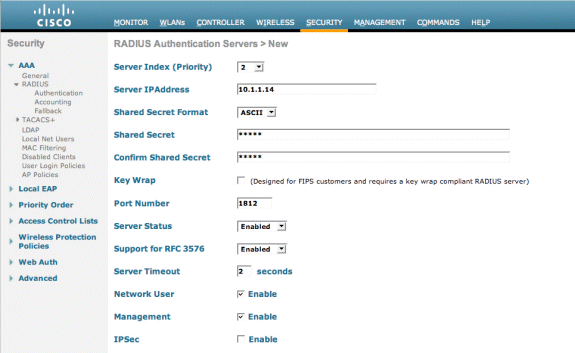

The RMI IP address must be in the same subnet as the primary management interface. Using RMI+RP along with Gateway Reachability Detection is now considered best practice.įollowing the configuration of the RMI, you will see secondary IP address on the interface that is used to connect the wireless controller to the network. The RMI is a secondary interface used for dual-active detection, monitoring the reachability of the standby controller, and supports Gateway Reachability Detection. The redundancy management interface is a virtual interface that is created using the “ redun-management interface” command.

Cisco’s configuration guide states, “ With a single RP link between the SSO pair, if the heartbeat on RP fails, there is no way find out if the failure is limited to the link or if the other controller has failed.“ Redundancy Management Interface (RMI) + RP Redundancy Port (RP)Ĭonnecting the physical RP of two wireless controllers together, back-to-back or via an upstream switch, enables each controller to send heartbeat messages to monitor reachability and sync configuration and link states between the peers. RMI, or Redundancy Management Interface, is a virtual interface that is created and used to monitor the uplinks of each controller. RP refers to the physical redundancy port on the wireless controller. Be sure to review this document published by Cisco. To start, we’ll quickly review the configuration of HA on the 9800 controllers using 17.1+. It is also much easier to issue 5 commands in total compared to the 5+ commands it takes to enable access to the GUI. I always suggest using the CLI so that you can understand what configuration is applied. Primary Redundancy Management Interface (RMI)īackup Redundancy Management Interface (RMI) For example, if your primary management IP address will be 192.168.1.254, use 251-253 for backup management IP and the RMI for each controller. Decide which IP address will be used by the main controller and use three others that are close in range. Tip #4 – Use a block of 4 IP AddressesĮach controller will have a management interface IP, redundancy management interface (RMI) IP, and redundancy port (RP) IP. This may seem easy, but I often find myself in customer environments where I do not have access to the switches where the controllers connect (or their configuration). If you ever find yourself having troubles getting the controllers to see each other, be sure to double-check the port config where you are attaching your controllers. There is a table in Cisco’s documentation that describes active/standby-recovery states when the gateway cannot be reached but the controllers can still communicate via the redundancy port (RP).
Tip #3 – Validate Your Network ConfigurationĪlthough obvious, this can cause a lot of confusion and frustration. Although the HA “state” will change immediately when the controllers can see each other, I found it best to apply the configuration and allow them to find each other while booting up. Issue the commands on each controller before they touch the network. Tip #2 – Configure HA with Controllers “Offline”
#Edit web portal bundle cisco wlc windows#
I set the controllers side-by-side, open two sessions, and position the putty windows accordingly. Both use a micro-USB cable (I leave the bolts out of my WLAN Pi for easy access to the cable when I need it).

I always carry multiple USB cables not only because they get torn up easily, but also because I always have my Ekahau Sidekick and WLAN Pi on me. Tip #1 – Console Into Both Controllers SimultaneouslyĬonnecting to both controllers is easy when you have more than one console or micro-USB cable. To start, there are a few things I’ve started to do recently that have helped tremendously. If you are adding a second controller to one that is in production, be sure to understand the requirements fully. This guide expects the use of IOS-XE 17.1.X or later and assumes you are pairing new controllers out of the box with no prior configuration. Previously, connecting controllers back-to-back via their RPs was fool proof this is still an option on the 9800s but is no longer best practice. IOS-XE 17.1.X brought the concept of the redundancy management interface to the Cisco 9800 wireless controllers that we know from AireOS.


 0 kommentar(er)
0 kommentar(er)
